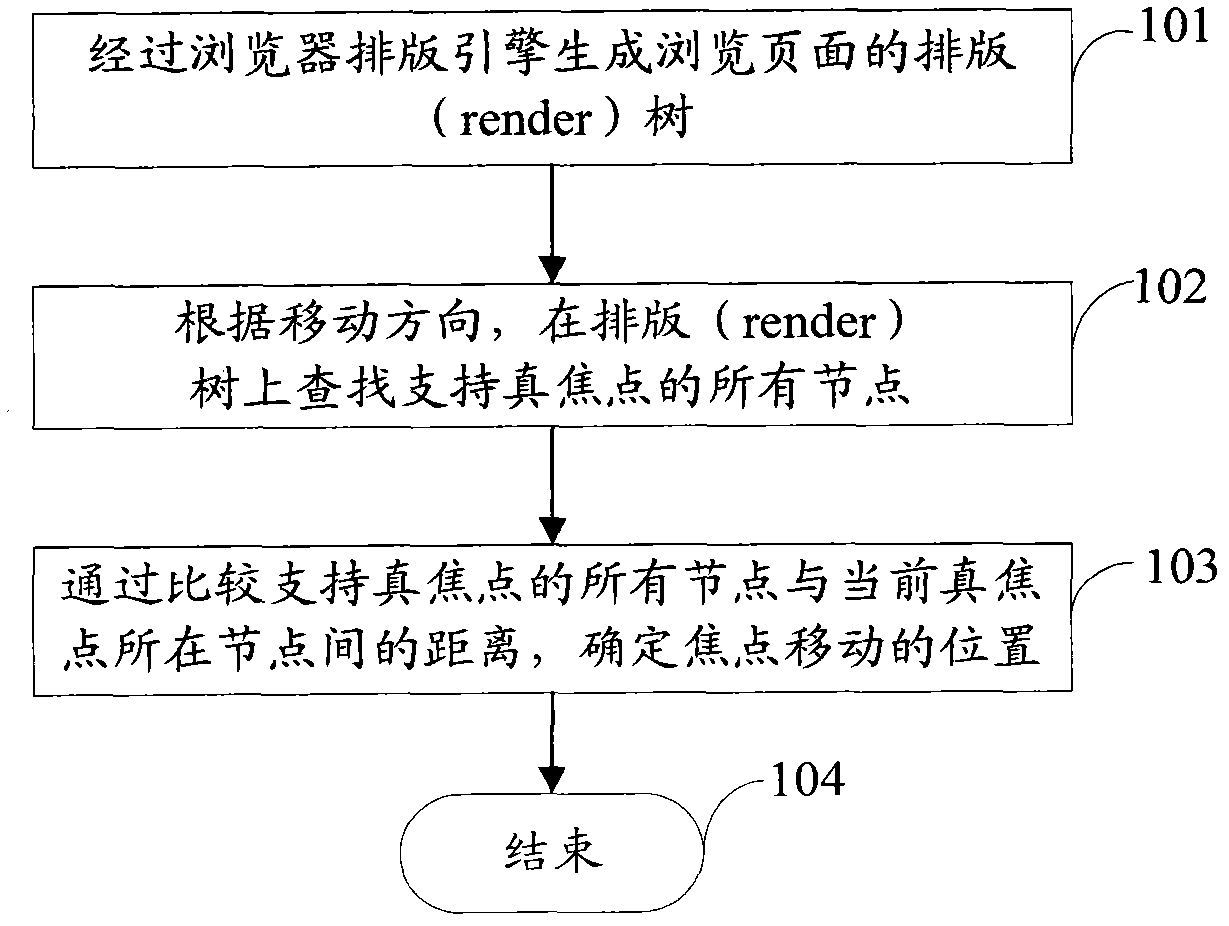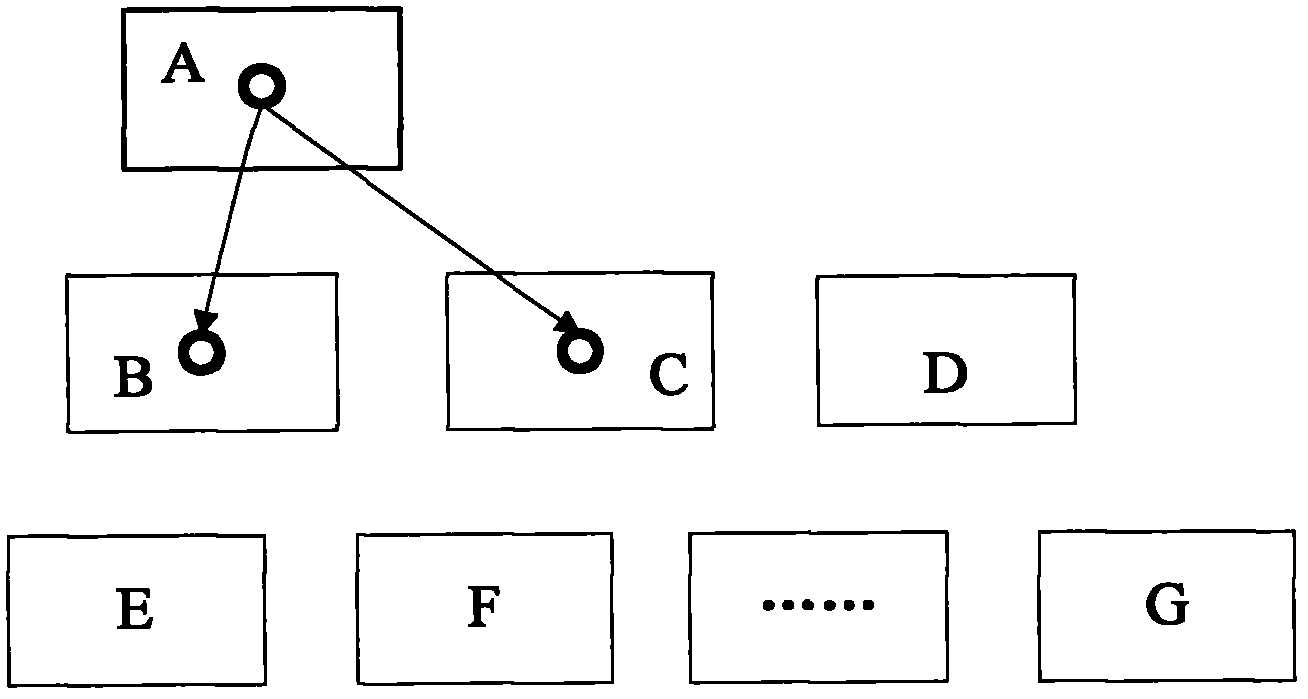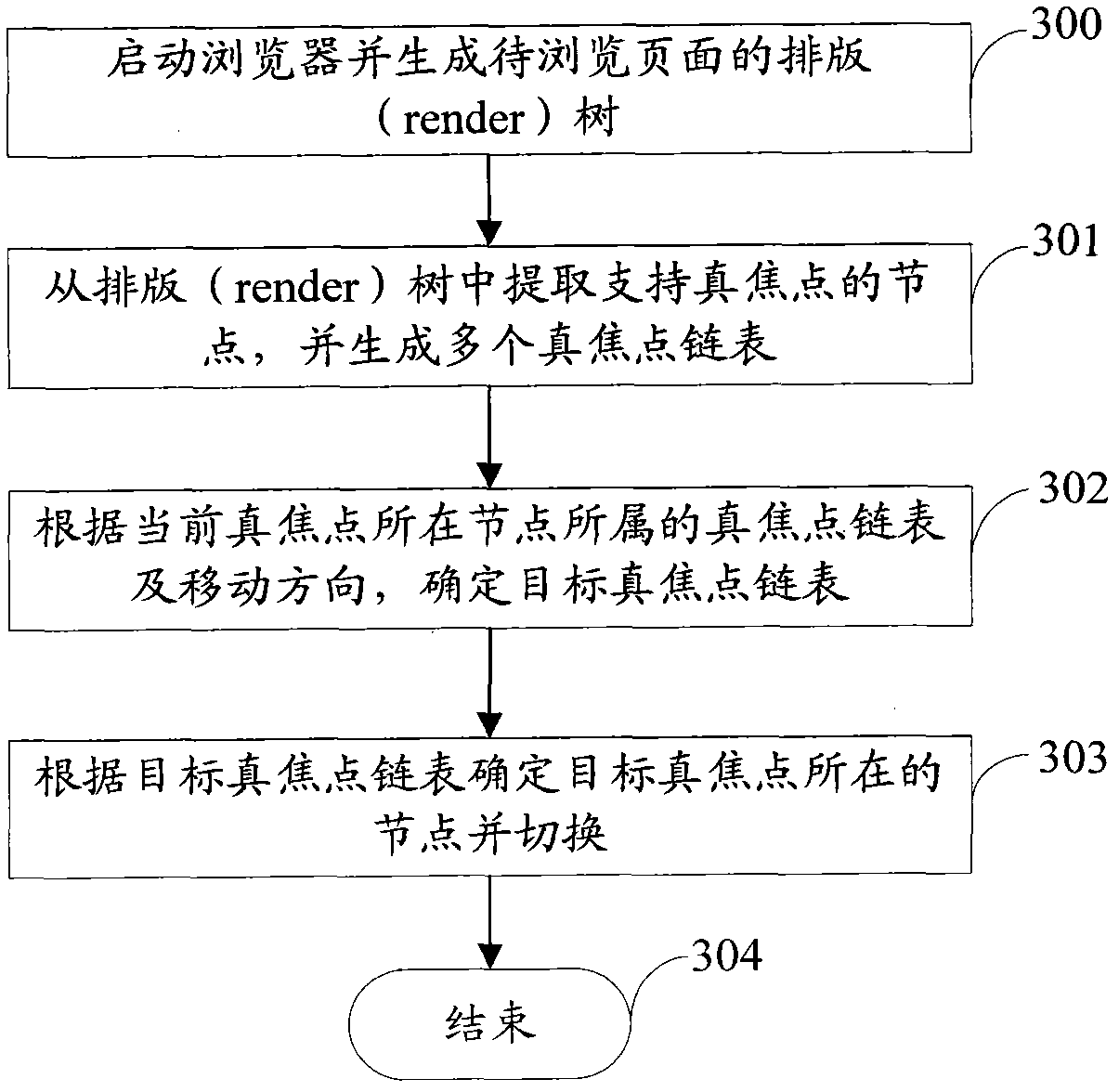Method and device for moving focuses based on embedded browser
An embedded browser, browser technology, applied in instruments, special data processing applications, electrical digital data processing, etc. Effect of movement speed, number of reductions, and number of calculations
- Summary
- Abstract
- Description
- Claims
- Application Information
AI Technical Summary
Problems solved by technology
Method used
Image
Examples
Embodiment Construction
[0054] In order to make the object, technical solution, and advantages of the present invention clearer, the present invention will be further described in detail below with reference to the accompanying drawings and examples.
[0055] In order to express clearly, the moving direction of the present invention is first defined and described: in view of the fact that when browsing pages, the user scrolls more pages along the Y-axis direction in the two-dimensional coordinates, the focus moving method and device of the present invention can only be moved in the Y-axis direction The focus movement in the X-axis direction is the same as the focus movement method in the Y-axis direction, and will not be repeated here.
[0056] image 3 It is a flow chart of the focus moving method based on the embedded browser of the present invention. Combine now image 3 , the focus moving method based on the embedded browser of the present invention is described, specifically as follows:
[00...
PUM
 Login to View More
Login to View More Abstract
Description
Claims
Application Information
 Login to View More
Login to View More - R&D
- Intellectual Property
- Life Sciences
- Materials
- Tech Scout
- Unparalleled Data Quality
- Higher Quality Content
- 60% Fewer Hallucinations
Browse by: Latest US Patents, China's latest patents, Technical Efficacy Thesaurus, Application Domain, Technology Topic, Popular Technical Reports.
© 2025 PatSnap. All rights reserved.Legal|Privacy policy|Modern Slavery Act Transparency Statement|Sitemap|About US| Contact US: help@patsnap.com



